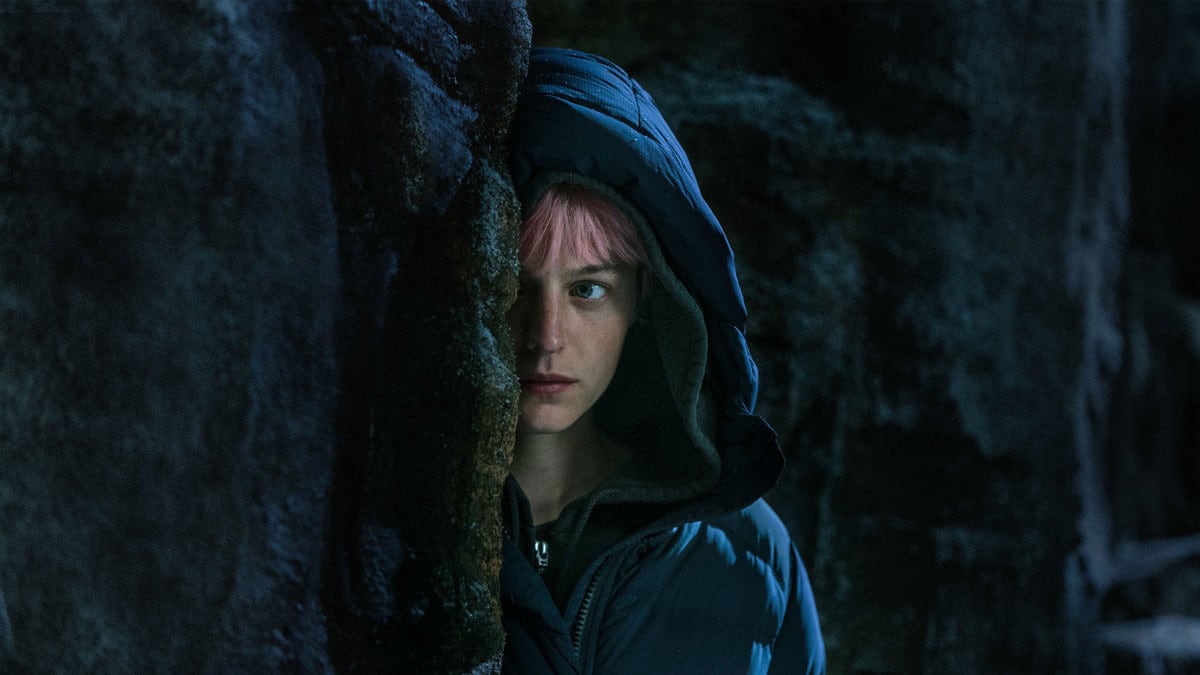Several times throughout my three-night binge of FX’s A Murder at the End of the World, which premieres Nov. 14 on Hulu, I found myself pondering a question that I rarely ask anymore: “I wonder what happens next?”
I’ve often found that consistency is one of the most difficult things for a modern television show to maintain. Multi-season programming has all but lost the ability to hold a decent dramatic arc, likely because so many writers have come up writing limited series, and even those are usually bloated misfires. They’re overlong, yet somehow, almost always underdeveloped—even with all of the flashy tricks they use to convince you otherwise.
A Murder at the End of the World is the diametrical opposite, a show that succeeds in spite of being stuffed to the gills with all of the things that so many limited series arm themselves with to glamor the unassuming, average television viewer. It has a surplus of characters, a convoluted plot, a distinct location to set itself apart from the crowd of other programming, and a handful of recognizable actors with large enough names to sell to the general public. And still, it’s the rare show that uses all of those things to its advantage.
On top of that, the show is a damn fine original mystery, bucking tired genre tropes. It’s genuinely suspenseful and delightfully gripping, eliciting gasps and squirms in equal measure throughout its seven parts. For once, those moments don’t simply appear tacked onto the end of an episode to fool viewers into thinking that what they’ve just seen has been surprising enough to hit play on another installment. A Murder at the End of the World understands the importance of coherence, retaining its slow drip of secrets to become one of the best mystery series in recent memory.

That’s a credit to its creators Brit Marling and Zal Batmanglij, writers and co-creators of the beloved Netflix series The OA, which garnered a massive fanbase during its two-season run—and equally massive outrage when it was unceremoniously canceled after earning rave reviews. In Murder at the End of the World, Batmanglij and Marling reteam for another tech-forward mystery, this time one that’s slightly more accessible to viewers than the high-concept OA.
In the show, Emma Corrin stars as Darby Hart, a novelist, hacker, and amateur sleuth—like a Gen Z Lisbeth Salander with a slightly less abrasive haircut. Having just published her first book to a tepid response, Darby is shocked when she receives an invitation to be a part of a remote retreat held by Andy Ronson (a menacing Clive Owen), the enigmatic tech trillionaire who would make Elon Musk and Jeff Bezos shit themselves with one glance. Darby is even more shocked that, when she agrees to attend the retreat at a secluded hotel in Iceland, she’s confronted with Bill Farrah (Harris Dickinson), the subject of her book and former love, now a respected conceptual artist. Darby and Bill haven’t seen each other in six years, when Bill fled from the sight of their first case.
Andy has gathered Darby, Bill, and six other powerful strangers at his Icelandic hotel, alongside his wife Lee (Marling) and their son, to find a solution to the climate crisis. Except Andy has given up on trying to convince corporations to make sustainable changes, and instead, he’s gathered some of the world’s most brilliant minds to figure out what happens when everything on Earth goes irreparably to shit. Though they’re hidden away in the hotel, shielded from the harsh elements of a rapidly changing world outside, things aren’t much safer inside, and it’s not long before one of the guests turns up dead.

While the show’s basic setup might come straight from an Agatha Christie novel, A Murder at the End of the World is the kind of mystery that would make Christie or one of her modern contemporaries like Gillian Flynn seethe with jealousy. Its plot is wickedly taut, never wasting a single second of an episode or filling time with anything unnecessary to the show’s larger story. Marling and Batmanglij—who also switch off directing episodes—carefully construct each of their characters. Even the supporting cast is given fully fleshed personalities that they can sink their teeth into, particularly Alice Braga and Joan Chen, who is just as mystifying as she was 30 years ago in another little mystery you might’ve heard of called Twin Peaks.
But it is Dickinson who ultimately steals the show (often away from Corrin, his frequent scene partner). As Bill, Dickinson lends charisma and stony interiority to the small screen with all of the magnitude he’s brought to films like Triangle of Sadness and Beach Rats in recent years. His is the kind of talent that can single-handedly elevate an already excellent series, and Dickinson is frequently the show’s grounding force, especially when Corrin’s character swings too far one way. Darby has a few too many traces of Manic Pixie E-Girl, especially in flashback sequences that depict the story of how she and Bill met and began the events of Darby’s novel. In scenes of the past, Darby’s character is underwritten, and she’s perhaps a bit overwritten in the present. That doesn’t prevent Corrin from delivering a lived-in, absorbing performance, it just doesn’t set Darby up to a Libseth Salander level of instant iconography.
Sometimes, this is of no fault of Corrin’s. Batmanglij and Marling’s writing can be too literal when it comes to the minutiae, recycling warnings about AI and tech that feel dated arriving now. (“You look at photos of movie theaters in the 1940s, everyone’s smoking; if you took a picture now, everyone’s just hunched over their phones—it’s the same addiction,” Bill says at one point, my only outright shudder at the dialogue.) Given the quickly changing nature of technology, it’s hard to make something original that feels both current and perennially relevant, but the show’s co-writers also knock it out of the park at other times.
In fact, by occasionally stumbling over its messaging about AI and climate, A Murder at the End of the World ultimately feels more realistic, as if it’s less concerned with getting everything right and more worried about developing a riveting central mystery. Its sporadic clumsiness makes the show seem less pretentious, and that hokiness can even be gleeful to watch. Audience accessibility goes a long way in a mystery like this, and with such dastardly impressive pacing, it’s hard to get tripped up on any of the show’s few snags.

The ability to formulate an engrossing whodunit—one that legitimately kept me guessing until the end—is all but a lost art. It’s easy to see flashes of the disappointing Nine Perfect Strangers in A Murder at the End of the World’s conceit, or similarities to Rian Johnson’s abysmal Knives Out sequel Glass Onion when this show leans into its more tech-forward nature. But A Murder at the End of the World has one thing those works don’t: bite. It’s insidious and unnerving in the way that it illustrates how humanity doesn’t change despite all of our advances, and uses the frigid on-location Icelandic scenery to convey a chilling sense of isolation you simply can’t get on a studio backlot or soundstage.
Unpredictable and pleasurably intense, A Murder at the End of the World is the kind of properly binge-worthy television that has fallen off in recent years. But thankfully, audiences won’t be able to binge this until it has aired all seven installments—and that’s a very good thing. I can’t think of anything more enjoyable than settling into the cold winter months with a mystery like this to cozy up with week to week. It’s as good as any thrilling paperback, and certainly more exhilarating than almost any other choice on TV right now.






